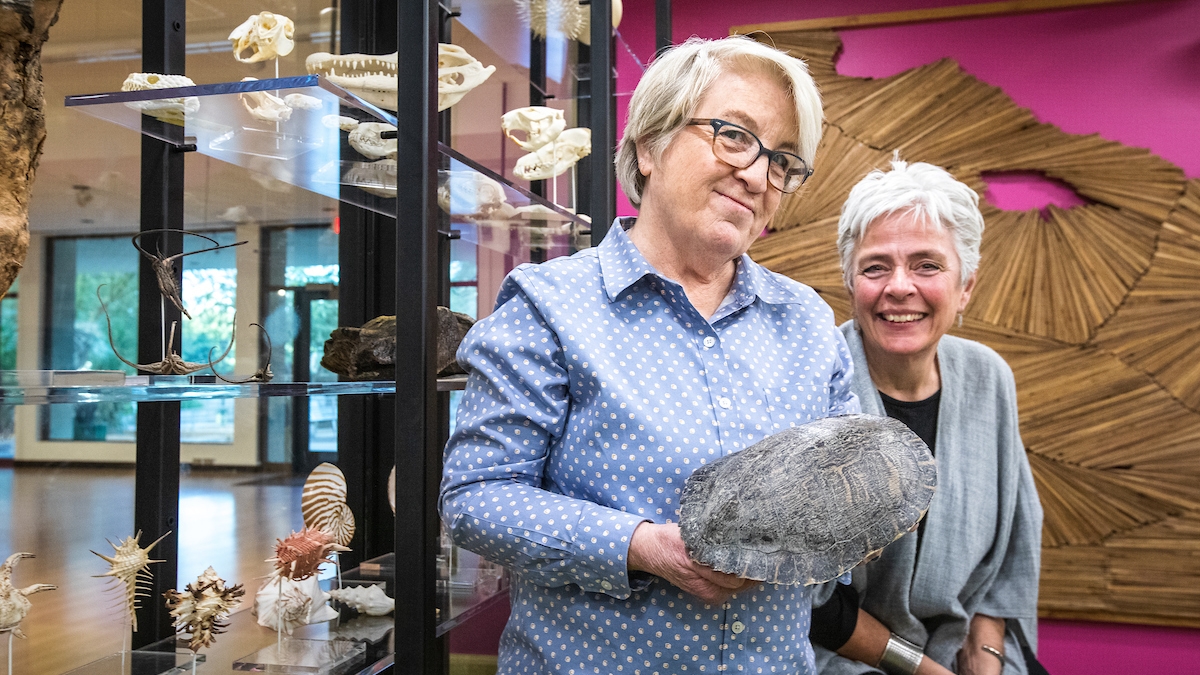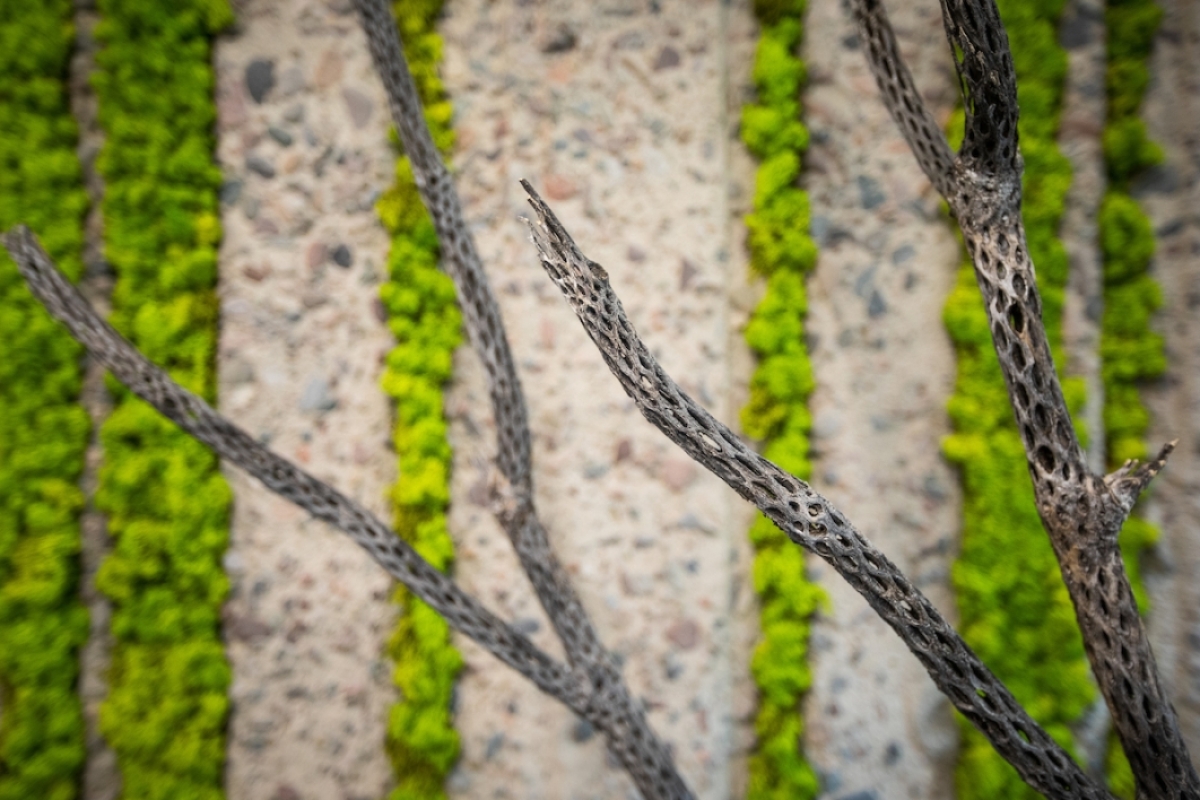Arizona State University’s Biomimicry Center The Biomimicry Center is located in the Design South building on the Tempe campus and is a joint effort between ASU and Biomimicry 3.8, a world-leading bio-inspired consultancy. opened in spring 2015, but it keeps evolving, inspiring students to take a page right out of nature.
On Jan. 22, the Biomimicry Center will debut its newly remodeled space: NatureMaker. The hands-on library includes about 2,000 individual artifacts from around the world that students can analyze and use as inspiration for biomimetic designs.
Biomimicry is an emerging discipline that allows humans to solve some of the world’s greatest challenges by mimicking nature. Adelheid (Heidi) Fischer, assistant director of the Biomimicry Center, hopes the space can provide the link to nature she believes is currently missing.
“It’s a joyful place to walk into, and there’s so much to look at and there’s so much to learn.”
At first glance, NatureMaker looks like a library; there are books along the wall and reading space throughout the room. But tucked away, nearly in plain sight, are drawers full of natural artifact collections like dragonflies, beetles and various seeds. Along the outer wall, there’s a storefront-like display with larger artifacts, including a whale vertebrae — the largest piece in the collection.
The artifacts come from a variety of places, either donated or purchased online or locally, but all have a story to tell.
“Part of what’s guided that is keeping an eye towards things that have really good natural history stories, and that could have some potential application, potential inspiration for someone who may be an engineer, architect or designer — to find a sustainable solution by mimicking that strategy or that adaptation in nature,” Fischer said.
The concept for NatureMaker was inspired by the Rhode Island School of Design’s Nature Lab, which boasts nearly 80,000 individual, natural specimens. Fischer shared her vision for ASU with Debra Riley-Huff, director of the Design and the Arts Library and division head of humanities, and in about a year’s time, the proposed concept became a reality.
“I thought it might be possible for us to start a collaboration, especially because libraries have a lot of experience in putting a collection together, cataloguing the collection, making things accessible and creating a hands-on kind of library.”
NatureMaker would not be possible without the support of ASU Library, which provided seed funding for the project. With the renovation of Hayden Library complete, both ASU Library and NatureMaker will continue partnering together, especially through Hayden Library’s renovated Makerspace, where additional artifacts will be housed. The ASU community will also be able to get 3D printouts of artifacts scanned at the NatureMaker space at Hayden’s Makerspace.
In addition to viewing artifacts at NatureMaker, the ASU community will be able to utilize various microscopes and dissection kits and check out field kits and binoculars. Some of the specimens will also be labeled with QR codes that will provide additional information to the person viewing the artifact via their smartphone.
“We’re hoping that this space is a space that inspires,” Riley-Huff said. “We just want students to leave here and feel really good and have something that they didn’t have before when they came in.”
To celebrate the debut of the newly remodeled space, Naturemaker will host an open house on Jan. 22. On Jan. 23, NatureMaker will launch its Nature@Noon series, and in the evening, host a lecture by guests of the Rhode Island School of Design’s Nature Lab, the inspiration behind the new space.
Top photo: Debra Riley-Huff (left), director of the Design and the Arts Library, and Heidi Fischer, the Biomimicry Center assistant director, look over a tortoise shell at the bio-inspired NatureMaker space in the Biomimicry Center in the Design South Building on the Tempe campus. Photo by Charlie Leight/ASU Now
More Science and technology

ASU professor breeds new tomato variety, the 'Desert Dew'
In an era defined by climate volatility and resource scarcity, researchers are developing crops that can survive — and thrive — under pressure.One such innovation is the newly released tomato variety…

Science meets play: ASU researcher makes developmental science hands-on for families
On a Friday morning at the Edna Vihel Arts Center in Tempe, toddlers dip paint brushes into bright colors, decorating paper fish. Nearby, children chase bubbles and move to music, while…

ASU water polo player defends the goal — and our data
Marie Rudasics is the last line of defense.Six players advance across the pool with a single objective in mind: making sure that yellow hydrogrip ball finds its way into the net. Rudasics, goalkeeper…









